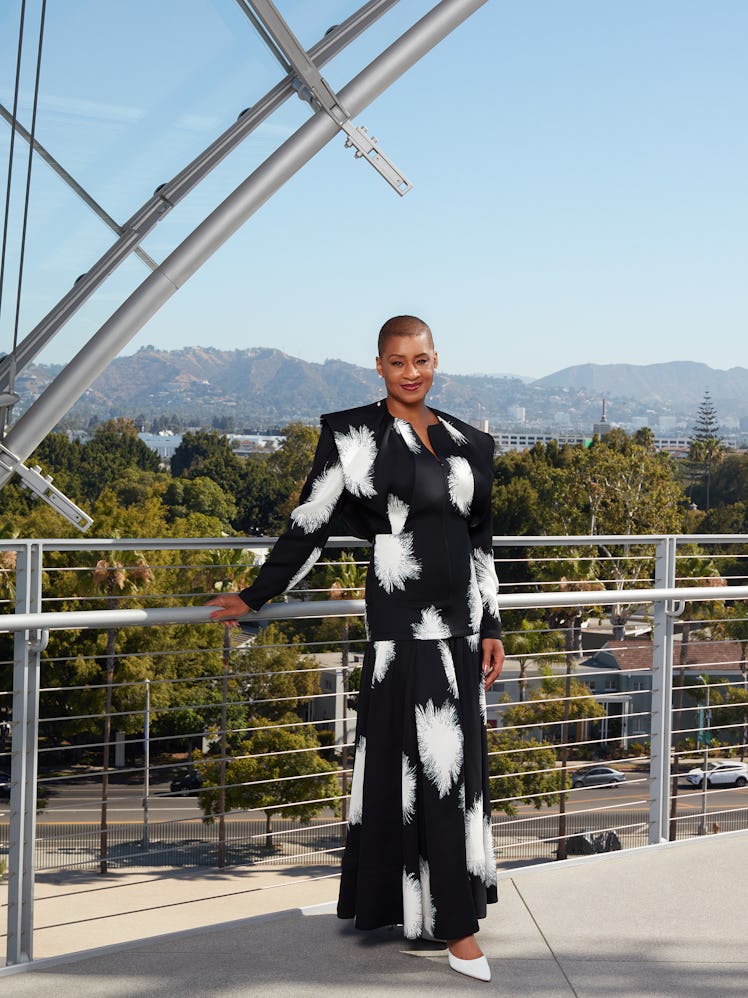Jacqueline Stewart Wants to Show You Another Side of Hollywood

For W’s annual The Originals portfolio, we asked creatives—pioneers in the fields of art, design, fashion, comedy, activism, and more—to share their insights on staying true to themselves. See this year’s full class of creatives here.
As an academic, a film-program curator, and a TV personality, you do work that bridges the gap between scholarship and entertainment. You’re a professor in the department of Cinema and Media Studies at the University of Chicago, as well as the host of Silent Sunday Nights on Turner Classic Movies. What made you also want to take on the job of director and president of the Academy Museum of Motion Pictures, in Los Angeles?
I was looking for ways to expand the reach of my scholarship and my work. My experience at Turner Classic Movies demonstrated that people really want to go more deeply into film history. And film can be a vehicle for a much broader dialogue. In 2020, as larger questions were coming up about when we are going to see real change with regard to racial equity in this country, it just seemed to me that the Academy Museum would be a place where I could have a broader impact on those discussions. One of the balances to strike at the museum is to get people who want to have an entertaining experience to also slow down and really feel like they’re learning something new.
When did you realize you were in love with cinema?
I grew up spending a lot of time with my aunt Constance, who was born in 1921. She loved old movies, and I always stayed up really late with her watching black and white films. She would talk to me during the commercial breaks about all the stars and the theaters that she used to go to. I was fascinated by the alternative world that I saw, the way that people talked and the way they dressed.
Is there an early film that stuck with you?
When I was an undergrad at Stanford, I saw a film called The Blood of Jesus, by Spencer Williams. It was a Black-cast film for segregated Black audiences, and it’s about a woman who gets shot right after she’s baptized. She has this out-of-body spiritual experience where she has to decide if she’s going to go to heaven or hell. I had never seen a film that was so steeped in that Black cultural and religious experience. That made me want to learn more about this whole separate Black film industry that most people don’t know about. Part of the power of films is that when they catch you emotionally, they can inspire you to think differently about the people you’re seeing on-screen.
Who is the most original person you can think of?
Grace Jones. She is always operating on a different register.
There are so many filmmakers and scholars who break rules when it comes to form, style, or audience expectations. Who taught you that it was okay to break the rules?
Reading bell hooks certainly gave me that impression. I’ve also been totally inspired by the work of two dear colleagues, Kara Keeling and Daphne A. Brooks, both of whom are Black feminist scholars who reach beyond the boundaries of what their fields are supposed to be, and by the work of Black women writers across the board, like Toni Morrison and Alice Walker. There’s a really strong and important Black feminist tradition of being inspired by each other across disciplinary boundaries.
What advice would you give to people who are trying to find their way in to engage with Black cinema history?
Be broadly curious. Watch all kinds of films, especially films that you don’t think you’re interested in. Then have conversations with people about them. Articulating your experience is important for assessing how you feel and think about what you’ve seen. Then read: There is so much important writing about film by filmmakers, who are very often the biggest film geeks, and they bring into their conversation all the films that have inspired them. That gives you something to build onto your viewing list.
What are some films that should be on everyone’s list?
Daughters of the Dust, directed by Julie Dash. It invites audiences to really think about the struggles and the histories of Black women, which is one of the many ways in which it’s radical. And we just had our first 3D screening at the museum of Martin Scorsese’s Hugo, which is such a lovely film, and it includes clips from short films by Georges Méliès. Seeing these early magic films properly colorized and restored, and rendered in 3D, really brought them to life.
What’s the most unoriginal thing people ask you?
“What’s your favorite movie?” That’s the one that I get a lot, and it’s very hard for me to answer because I never want to answer it the same.
Makeup by Schuron Womack; Photography Assistant: Vassily Maximillian.
This article was originally published on